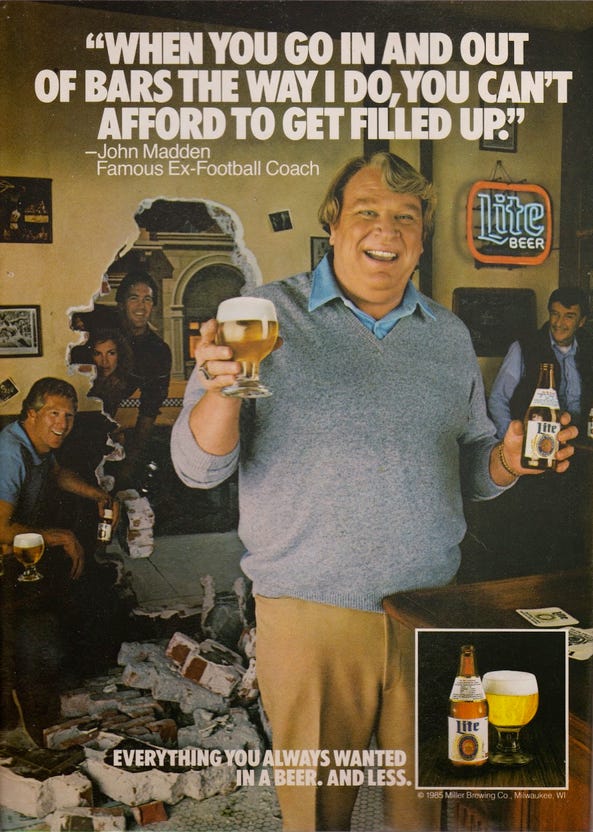The year is 1973.
Miller Lite is launched as America’s first successful mainstream light beer.
Up until the ’70s, various companies had tried launching low-calory beers with little success.
And this includes Miller Lite, which was initially launched as Gablinger’s Diet Beer. And when that didn’t work, as Meister Brau Lite.
In the end, Miller Lite succeeded where most other beers failed because low-cal was considered a sissy product and it turned off the heavy beer drinker.
And we all know that a national beer can’t exist without a heavy drinker.
Miller changed everything with the iconic campaign that promised a beer that tastes great AND was less filling. They also featured iconic athletes to prove that drinking lite was in no way unmanly.
Enter Bud Light.
By the early ’80s, beer drinkers across America knew that Miller Lite, and all light beers for that matter, were less filling than regular beer.
But what about taste?
In 1982, Budweiser introduced Bud Light and challenged Miller Lite with a different product promise; that of superior taste.
There was no category for low-calorie beers until Miller Lite came around. And with their famous campaign they firmly established themselves as the less-filling beer.
And when it did, people promptly understood it as beer but with low calories.
Consumers are hardly ever swayed by ‘me too’-products. Why risk disappointment by buying something new when it’s practically the same as what you already have?
Miller Lite was different from regular beers. But Bud Light clearly set itself apart from Miller Lite because it promised superior taste on top of being less filling – this was by then a standard for all lite beers.
Miller Lite was left out in the cold without clear differentiation, while Bud Light blazed ahead with a brand new product promise.
When we discover a new product, we automatically compare it to something we already know.
We look to the features to separate similar products from one another.
That’s why you hear people talking about building the ‘Netflix’ of one thing and ‘Uber’ of another.
As a brand marketer, you need to pay attention to how your customers categorise your product.
This calls for understanding the position of your product in your customer’s frame of reference.
Once you understand what your product is naturally being compared to, you can begin to differentiate it by clarifying your product promise.
This is an ongoing process because – as the category grows and starts attracting new brands – your original product promise will be challenged.
Just as much as the success of your product relies on building a clear position, being distinct, and communicating a clear product promise, its survival relies on being responsive to the market changes.
And if you happen to be the challenger brand, don’t just be ‘the same but better’.
Show people how you’re different and dare to stand apart.
